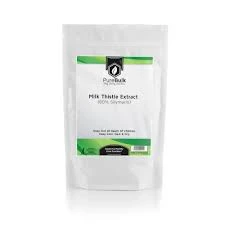
ஆக . 13, 2024 15:02 Back to list
Exploring the Impacts and Management Strategies for Porcine Reproductive and Respiratory Syndrome in Swine Farming
Porcine Reproductive and Respiratory Syndrome An Overview
Porcine Reproductive and Respiratory Syndrome (PRRS) is a viral disease that significantly affects the swine industry worldwide. First identified in the late 1980s, this syndrome has since become one of the most economically devastating diseases for pig production, affecting both reproductive performance in sows and respiratory health in pigs of all ages. Understanding PRRS is crucial for effective management and prevention strategies in swine herds.
The causative agents of PRRS are two distinct strains of the Porcine Reproductive and Respiratory Syndrome Virus (PRRSV), classified into Type 1 and Type 2, with Type 1 primarily found in Europe and Type 2 in North America. This virus belongs to the family Arteriviridae and is known for its ability to mutate rapidly, which complicates vaccine development and disease control strategies.
Clinical Symptoms and Diagnosis
PRRS presents a complex array of clinical signs. In breeding sows, the disease is often characterized by reproductive failures, including increased rates of spontaneous abortions, stillbirths, and litters with low birth weights. In growing pigs, PRRS typically manifests through respiratory issues, including coughing, labored breathing, and increased susceptibility to secondary infections such as pneumonia. These symptoms can lead to increased mortality and reduced weight gain, impacting overall herd profitability.
Diagnosis of PRRS can be challenging due to its clinical similarities with other swine diseases, such as swine influenza and Mycoplasma pneumonia. Laboratory testing, including PCR (polymerase chain reaction) assays and serology to detect antibodies, is essential for confirming the presence of PRRSV in affected animals.
Economic Impact
porcine reproductive and respiratory syndrome

The economic implications of PRRS are staggering. Estimates suggest that PRRS costs the swine industry billions of dollars annually in lost productivity, increased veterinary costs, and the need for enhanced biosecurity measures. The impact is not limited to affected farms; the disease can spread rapidly, leading to outbreaks in multiple production systems and contributing to market instability.
Prevention and Control Strategies
Effective management of PRRS requires a multifaceted approach. Vaccination is a critical component of control strategies; however, due to the virus's genetic variability, vaccines may not provide complete protection. Therefore, biosecurity measures are equally important. This includes stringent protocols to prevent the introduction of the virus into farms, such as controlling animal movement, maintaining hygiene, and managing personnel access.
In addition to biosecurity and vaccination, herd management practices play a crucial role in controlling PRRS. This includes regular monitoring of animal health, prompt isolation of sick animals, and implementing strategies to reduce stress in herds, which can exacerbate disease outbreaks.
Research and Future Directions
Ongoing research is vital for the development of more effective vaccines and treatments for PRRS. Scientists are exploring novel approaches, such as genetic resistance in swine and improved diagnostic tools that can identify PRRSV variants more accurately. Furthermore, understanding the epidemiology of PRRS and its transmission dynamics is crucial for developing comprehensive control programs.
In conclusion, Porcine Reproductive and Respiratory Syndrome remains a formidable challenge for pig producers globally. Continuous improvement in control strategies through research, vaccination, and stringent biosecurity measures can help mitigate the impact of this disease on the swine industry. Collaboration among veterinarians, producers, and researchers is essential to develop innovative solutions and protect the future of swine production.
-
Premium China Bacillus Subtilis Supplier & Factory Solutions
NewsJul.30,2025
-
Premium Avermectin Supplier in China | Custom Solutions Available
NewsJul.29,2025
-
China Bacillus Subtilis Supplier - Custom Factory Solutions
NewsJul.29,2025
-
China Salivation: Leading Custom Salivation Supplier & Factory Solutions
NewsJul.29,2025
-
Leading Lincomycin Hydrochloride Manufacturer & Supplier with High Purity
NewsJul.29,2025
-
Bio-Enzyme Yogurt Growth Promoter Factory - Top Quality Manufacturer & Supplier
NewsJul.28,2025




